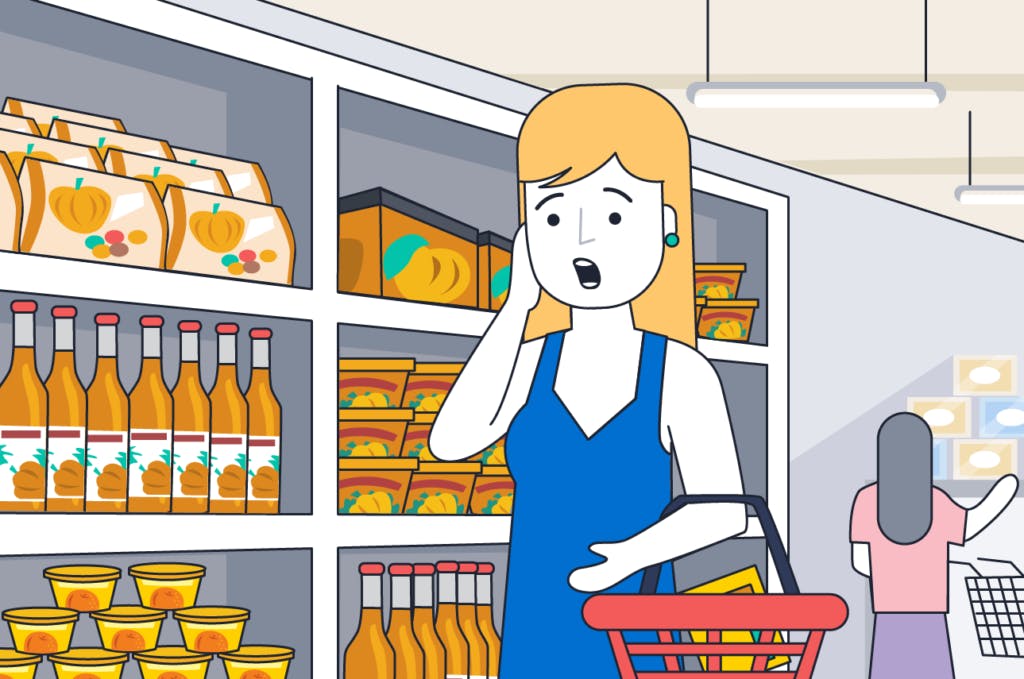The cool fall air sends the red and gold leaves tumbling to the ground in a perfect autumnal picture. But as night descends on what was a picturesque fall day turns into a spooky evening, complete with bare branches now tapping at windows and casting eerie shadows in the moonlight. Obviously, the only thing to do to ward off your fear is to hole up in your living room working your way through the jumbo bag of candy that was supposed to be for the neighborhood kids on Halloween. Oh well. You can always make another run to the store.
And while you’re there, take a good look around. You’re almost guaranteed to see some things that are ten times scarier than spooky shadows and weird noises. Here are the three most frightening things I’ve seen in CPG lately:
- Pumpkin spice everything. Starbucks created a monster with the PSL, and now pumpkin spice has gone beyond the latte and pervades just about every type of CPG product out there, from breakfast cereal to cream cheese to shampoo to shoes. (Okay, maybe not that last one. But I wouldn’t be surprised.) I’m in no way against pumpkin spice things (I love a pumpkin scented candle as much as the next person), I’m just terrified that pumpkin spice is going to take over the world, or worse—be available outside of the fall season.
- The rise of private label products. Before you shake your head in dismay, understand that I’m tricking-and-treating you with this one—I find the increased investment in and acceptance of private label goods frighteningly good. I’ve long been a proponent of store brands, and consumers are finally, finally, catching up and embracing these products. All the big-name retailers have really upped their private label game in the past decade, and they’re leaning in to the wondrousness that is a store brand. Amazon is ramping up their own brands, and Whole Foods Market has entire stores (their 365 chain) devoted to their private label.1http://www.businessinsider.com/private-label-hurting-traditional-brands
- Shrinking and/or disappearing stores. I’m a big proponent of online shopping. I use it frequently, and the ease with which I can often place an order and put the task out of my mind is not lost on me.
But it’s a little scary to see the increase in online shopping correlating with the decrease in foot traffic to brick-and-mortar stores, sometimes to the point of store closures. As much as I like shopping online, I like having the option to visit a store, and touch and see and feel products—especially new products—before I buy them. I know retailers are aware of this (it’s been quite the hot topic of 2017), and some are already in the process of transforming their actual stores into destinations for shoppers, upping the “experience factor” for shoppers to draw them in.
My fear with this is that it won’t be enough, and retail will continue to experience a downsizing of physical locations, and consumers will be relegated to an online handle and data set of common purchases, rather than actual people buying actual products. Because let me tell you something you’ll probably be (not) shocked to learn—I’m quite friendly with the employees at my local grocery store, and they’re often the ones who encourage me to sample new products, remind me of a sale, or generally steer me toward something I might not have otherwise known. And that’s invaluable—for me, for the retailer, and for the supplier, and it’s not something I want online to replace.
Because that would take away the fun of fall! There’s nothing people love more than pulling out their cozy sweaters and sniffing that first whiff of pumpkin spice product-of-your-choice—it’s a smell-memory (or smemory, as I like to call them) that people go nuts for, and would completely lose its luster if pumpkin spice was available in, say, June.
Though some might feel the rise of private label is squelching national brands, I’m not too worried. There will always be a place for name-brand products with consumers. And if retailers continue to devote more dollars towards their own brands, that could indicate new relationships with suppliers that would be beneficial to both parties.
What’s scaring you about CPG these days?


